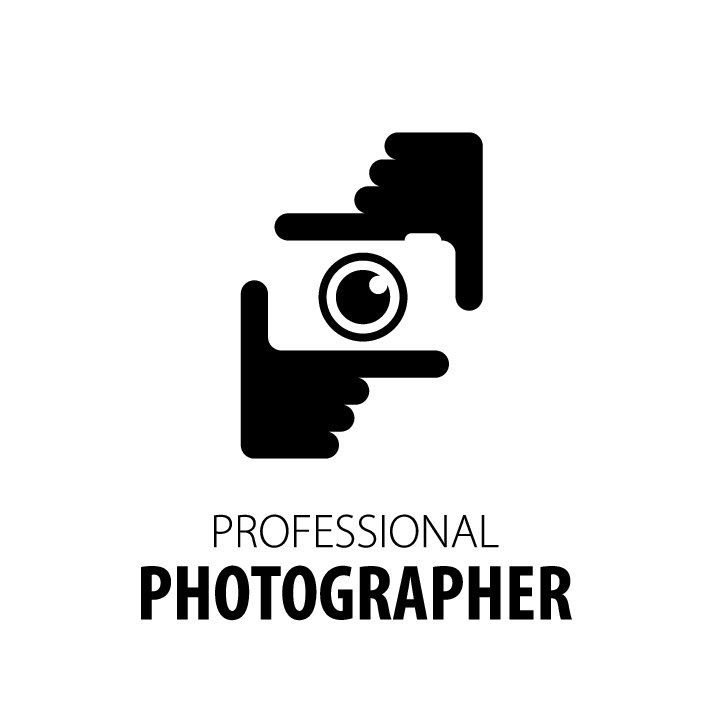9 Unique Real Estate Logo Ideas
Posted on March 11, 2018 by Logo Design Tips and Tricks

With over 2 million real estate agents in the United States, the competition is fierce. It’s more important than ever to set yourself apart from every other real estate agent around.
Which is why branding is so important. Part of an effective branding strategy is having a logo so clients can easily recognize you.
But you need to make sure your logo is unique. Here are some great real estate logo ideas to help get you started.
1. Use Color
When you’re looking for real estate logo ideas, what colors you want to use should be the first thing you think about. Colors are extremely important as each color conveys a different meaning.
Don’t go overboard on using colors. Too much and it will be confusing to people. You want to choose one or two colors that represent your brand best.
Try not to use colors that are trendy. Your goal is to create a logo that has lasting power.
It’s also possible to make a huge splash just by using black and white images.
2. Think of Symbols Outside the Home
When people think of real estate logo ideas, most think of using a house or some type of a dwelling. Except, that’s not really very memorable.
Instead, try using a symbol that might stick in people’s minds a bit longer. Geometric shapes would work well for the real estate industry.
Another way is to use images from nature to still convey a homey feeling without using an actual home. You could also use symbols from within the home as well.
Get creative and use symbols that symbolize who you are as a brand.
3. Make it Timeless
Your goal for creating real estate logo ideas is to find something that will stand the test of time. While certain trending ideas are useful, you don’t want to have to come back two years later and create something new.
Rather, try to find a logo that can be tweaked if it needs to be updated. The Quaker Oats brand has been using a Quaker on their cereal for over a century.
When they finally did some updates, it actually took them years of careful crafting before they made the changes.
4. Stick With Your Name
There are two options for real estate log ideas when you use your name. You can use your initials and design a really great monogram logo.
It’s perfect for people who either have very long names or difficult names to pronounce. You can also get creative with the various types of fonts and sizes that are available.
You can choose to use the monogram and another symbol or just use the monogram itself.
You can also choose to use your full name. Again, there are a variety of font styles and sizes you can use.
The best part is that your name will never go out of fashion. If in the future, you do need to make some updated changes, a new font can give you a whole new updated look.
If you do decide to go with a monogram or use your full name, make sure you’re fully committed to using your name for the rest of your career. Meaning, if you get married and take the other person’s name, you’d have to change your logo and branding strategies.
5. Make Your Real Estate Logo Ideas Fun
Buying or selling property is stressful for owners and buyers. Which is why it’s a good idea to create real estate logo ideas that are fun.
If part of your brand is that you make finding a dream home a fun and inspiring experience, then use symbols or artwork that show off your fun side.
Nike uses a swirl for their logo. It has nothing to do with running or shoes. But it does leave a lasting impression on people.
6. Keep It Simple
Whatever you do, keep your real estate logo ideas simple. Do not overcomplicate it.
You’re trying to gain a positive first impression with people. You do not want to confuse clients.
Sometimes you’ll see a company doing an advertising campaign that’s so outside the box that it leaves the viewer confused. That doesn’t help boost sales.
Instead, be creative but keep it simple.
7. Use a Slogan
A great slogan is one avenue you can take for your real estate logo ideas. A slogan is memorable and will always be attached to you.
Take the slogan, “looking out for your next move.” It has two meanings and is memorable. When a client is looking at Boise ID homes for sale, they now know who to call first.
Don’t make the slogan too long or complicated. A simple sentence that’s memorable and witty is enough.
8. Most the Most Out of Negative Space
The information on your logo doesn’t need to take up the entire space. Instead, leave some room for negative space.
You can actually do a lot with negative space. Take the FedEx logo, for instance.
Their use of negative space is so ingenious that most people don’t even realize they’re seeing an arrow in the “Ex” part of FedEx. Hidden images are fun and creative.
It’s subtle, yet powerful.
Negative space also forces the eye to be drawn to whatever is there. You could create a very simple logo with so much negative space that people have no option but to see your logo.
9. Active Versus Passive
Real estate agents are extremely busy. You’re always on the go.
Your real estate logo ideas can incorporate your active lifestyle into your brand. A bird in flight can show that someone is on the move.
You could even use a photo of a home that looks like it’s in motion.
You might also consider using a passive type of logo. That would convey that once you sell a home, the resident is there forever.
Make Your Free Logo Now
Don’t wait to set yourself apart from your competition. Get started making a new logo for yourself now.
It’s easy to get started. Check our tutorial that shows you how to create your own logo.
How to Create Your Own Logo in 5 Easy Steps
Posted on March 09, 2018 by Logo Design Tips and Tricks

Are your design desires deeper than your pockets? You’ll be glad to know you can create your own logo for way less than you’d pay a professional.
Online logo creators have made it easy for designers and non-designers alike to create stunning logos. Simple drag and drop tools take no skill to master. Best of all, you can design your logo for free and only pay for it if you’re happy with it.
This means you can get the logo of your dreams at a fraction of the cost of a professional artist.
The only limit is your own creativity.
Ready to get started? These five simple steps will help you create your own logo in minutes.
Peruse Logo Design Trends
Just like fashion and home decor, logo design trends evolve, too.
While you may want a timeless style, you likely won’t have the same logo for the entire life of your business. You want your logo to match the times to let people know you’re paying attention to what’s current.
The logo you create won’t necessarily look the same in five years as it does today. Companies are continually altering their logos to keep up with design trends.
Apple, Facebook, Twitter, and Coca-Cola regularly release new, slightly tweaked versions of their logo without affecting the overall design.
Some companies, like BP and Marriott, performed complete overhauls on their logos.
When creating your initial logo, go with what’s hot right now. You can always tweak it as trends change.
Consider the Psychology of Logo Design
There’s an entire psychology behind logo design that can help you create the right image.
Shapes, colors, and fonts play a huge role in shaping how others will perceive your logo.
Shape
There are three main types of shapes in logo design: organic, geometric, and abstract.
Organic shapes assume the form of an identifiable object, like a house or a leaf. Geometric refers to triangles, circles, squares, and the like. And abstract shapes do not define any predefined parameters.
Most logos have a combination of two or more of these elements.
Circles, ellipses, and general roundness promote a sense of community and partnerships.
Rectangles and squares represent professionalism and efficiency. In some cases, these shapes can ward off potential clients by creating a standoffish vibe.
Triangles promote power and balance. Spirals are fun and inspiring. Straight lines are bold and masculine while curved lines are softer and more feminine.
Take these things into consideration when deciding what shapes will best build your brand image.
Color
The significance of color in logo design runs as deep as that of shapes.
It affects how your audience views your brand. When combined with the right shapes, your logo can go a long way in promoting the right image.
For example, red is energizing and passionate. Yellow is fun and friendly. Blue is calm and professional and is the most popular color in logo design.
Take care to research the meaning behind color before you create your own logo. You want to take every opportunity to let your logo speak for your brand.
Font
The shape and style of your font can reflect a strong brand.
For example, do you want skinny letters or bold font? Script or straight? Does a handwritten style fit your brand, or perhaps a typewriter-style font?
You should choose a font that’s easy to read, but also one that fits your brand style. Using an online tool to create your own logo gives you access to lots of font choices.
Think About Where Your Logo Will Appear
How do you plan to use your logo? Will it appear on your website and other digital content? Do you plan to print it on business cards or marketing materials, like these banners or signs?
Logos can look different depending on how and where they’re used.
For example, a logo with tiny details or a gradient looks great on the screen, but those details likely won’t translate when printed on a business card.
Explore Other Logos to Get Inspired
You want your logo to be unlike any other, but that doesn’t mean you can’t garner a little inspiration from other companies.
FedEx, Amazon, and Apple have some of the most inspiring logo design elements. Look closely at the space between the “e” and the “x” and you’ll notice a hidden right-pointing arrow.
The arrow in the Amazon logo points from the letter A to the Z, reflecting the notion that they truly carry everything.
And Apple’s stem is actually the “bite” that’s been taken out of the apple.
These small nuances are easily overlooked, but they do make an inspirational impact. They prove thought, creativity, and professionalism went into the design process.
Even if you’re not a designer, you can still find these moments of creativity. All you need is a little inspiration and experimentation.
Use Free Online Software to Create Your Own Logo
Having a general idea of what you want before you start designing can save you hours at the drawing board.
Now that you’ve considered things like shape, color, trends, and what other companies have done, it’s time to create your own logo.
Tools like OnlineLogoMaker make it easy to get a simple yet powerful design. The clean interface lets you focus on your logo rather than dozens of tools and menus.
Using an online logo maker rather than standard design software has its benefits. For starters, you have a suite of images, fonts, and templates built in. This helps keep your final cost low.
In addition, you can see what your logo looks like on a business card before you finalize your design.
Once you’re satisfied with your logo, simply purchase it and download it to your computer.
Then start using it!
In Closing
Online tools and design help make it easy to channel your inner artist to create your own logo.
With a little time and imagination, you’ll have a logo you’ll be proud to show off.
Check out our online logo maker for free and start creating the logo your business deserves.
5 Innovative Logo Ideas For HVAC Companies
Posted on March 06, 2018 by Logo Design Tips and Tricks

The cooling and heating industry isn’t exactly the most glamorous type of business out there. Nonetheless, it is a necessary tool for homes and commercial properties.
If you have experience within HVAC companies yourself, you know these facts better than anyone. What you might not have as much knowledge about is logo design.
Logos and other creative tools are crucial to the success of any HVAC company. This is what makes you stand out from the crowd and get the attention of potential customers.
Luckily, making a logo isn’t rocket science.
Here are a few ideas to kick-start your HVAC company’s creative process.
1. Use Bold Colors
Nothing says “hey, look at me” like the use of a strong color contrast. This catches the eye of users who come across your logo on various digital and print mediums.
Bold colors can work well on a website, a social media post, a business card, a company shirt, billboards, and much more. You just have to know how to balance each shade when you’re creating the logo.
Begin in black and white to establish your foundation.
From there, add company colors to make sure your logo is well-branded. Then, see if you can turn one of your brand colors into a bolder shade, or if you can add a touch of another color entirely to make your logo pop.
2. Create a Unique Shape
Instead of using color to compete against the logos of other HVAC companies, try playing with different shapes.
There are many ways to incorporate a funky shape into a logo. You can set everything up in a circular design, a diamond orientation, or even something completely abstract.
The choice is up to you, and remember, your logo doesn’t have to be the exact representation of a certain shape. Feel free to go outside the lines a bit and see what happens.
3. Add a Hidden Message
While you’re combing colors and shapes, think if there’s any way you can create something entirely your own. Major companies like FedEx and McDonald’s have been able to do it with their iconic logo designs.
There’s no reason you can’t add a unique twist to your logo, too.
Think of the values your company holds itself to and the benefit of HVAC as a whole. Maybe highlight your specialty in AC maintenance or commercial installations.
Either way, focus on sending a message to users that will be memorable.
4. Stick with the Basics
If you’d rather not bend over backward to make your logo, you don’t have to. Just make sure it is something that is professional, beautiful, and sharp. That is the true key to making a logo timeless.
Take a look at what other HVAC companies are doing. Pay attention to the HVAC symbols they use and brainstorm how you can work something like that into your logo.
Logo design isn’t always a task of reinventing the wheel. You do have to make sure, though, that you aren’t just copying another logo you like.
5. Get to the Point
Sometimes, the best logo for your brand is as simple as the company name. This is the easiest way to create something unique, since no other HVAC company has the same title.
Take it a step further by finding the best possible font for your logo. Add a touch of color or a small, special symbol to wrap it all up.
Make a Logo That Sets You Apart from Other HVAC Companies
Logo design can be simple or a bit of a process. You may have a burst of inspiration or spend some time going back and forth until you get your design just right.
But, in order to create a beautiful logo, you have to get started!
Click here to create your very own HVAC logo.
Why Logos With Hidden Images Work
Posted on March 01, 2018 by Logo Design Tips and Tricks

Ever saw the arrow hidden in the logo for FedEx or how the Amazon logo points from A to Z? Hidden images like this can add a dash of ingenuity and style to your own business logo.
Logos is what identifies companies and sets them apart from others. It makes them memorable to customers, especially if their logo is creative and smart. Some of the most iconic brands in the world have creative logos with hidden messages that most people miss.
If you want to make your brand more memorable, you can try making a creative logo. Hidden images within it work because people know that you put in more effort and thought. It makes you look more trustworthy and fascinating to your audience.
Let’s discuss why logos with hidden images work.
Logos with Hidden Images Reveal Your Brand Identity
This is the common reason behind making logos. It’s imprinted in your products, business cards, and websites. Your logo communicates your ownership and it helps tell your audience who you are–the product or service you sell and the things you offer to them.
Taking it one step further, using a logo with hidden images makes your brand identity look more intelligent and creative. Making a play on your logo with a hidden image that represents your service makes customers think that your brand is for smart and perceptive people.
It Distinguishes You from Your Competition
A lot of companies these days use a certain set of symbols that represent their business or industry. For instance, the most common logo for pizza places is an Italian chef with a tall white hat and a wide smile. Dare to be different with your logo and stand out from other businesses that offer the same services.
If you use a good logo with hidden images, it helps other people recognize you more. A good example is Cheeba’s, a cannabis website that doesn’t use the usual cannabis icon as its logo. Instead, they have a cool green Cheetah mascot with a heart symbol hidden on its snout.
It Makes Your Audience Loyal to Your Brand
Most companies change their logos from time to time. They do it for several reasons–updating their look or reflect a change in their business. What you need to understand is that most consumers don’t like it when companies do this often.
You need to make people feel accustomed to your logo for them to become more loyal to your brand. Having a logo with hidden images adds another layer to your brands. Some customers feel more privy to your brand when they discover the hidden image on their own.
You Can Place It Everywhere
When you make a logo with hidden images, you can place it on your products, websites, and social media pages. You can make it into a social marketing campaign, asking your customers to share your logo if they found the hidden image. Posting it on Facebook is the best course of action since this platform has the most number of active users.
Making a creative logo ensures that you deliver your brand’s message. Once you successfully tie your logo to your brand message, your business’s actions become associated with your brand. A creative logo makes it more attractive when displayed on different media.
How to Make Smart Logos with Hidden Images
Designing logos is one of the most complicated things in graphic designs. If you have the creative and technical skills, it becomes easier. You can use our online logo maker if you want to design a logo for your brand without any charge.
Here are some tips you can follow to make a professional logo:
Do Your Research
Before you start thinking about how your logo looks like, research online for other brands’ logos first. You need to make sure that the logo design you’re planning isn’t the same as another company’s. You also need to look at how they use and design their own logos with hidden images to get good ideas on what works and what doesn’t.
It’s especially important if your company belongs to a big industry, such as:
- Real Estate
- Food & Beverage
- Construction
Failing to research could put your company’s credibility at risk. You don’t want people saying that your company is a copycat. That’s bad publicity and you’ll lose some brand loyalist as a result.
Don’t Rush
Sometimes you get flashes of inspiration when it comes to logo design. It can be great and innovative, but it’s better not to jump on the idea yet. Usually, the first ideas that come to your mind are the most common ones used by other businesses.
Take your time to research and mull over the logo idea. It allows you to come up with something more clever and original. This is especially important if you want to have a logo with hidden images on it.
Choose the Right Colors
A good color scheme can affect how people see your brand’s personality. For example, bright and bold colors could grab attention, but people see your brand as brash. Using muted colors make you look sophisticated, but it might get ignored more.
Each color can help communicate your message more. Remember your brand’s personality and choose the right color scheme for it. Don’t make the mistake of sending the wrong message because of inappropriate logo colors.
Choose an Appropriate Logo
Logos can be funny, serious, stylish, etc. You need to think about the kind of logo that fits your business. Remember, your logo should communicate your brand’s message to your audiences clearly. If you’re a serious law firm, you need to make it somber and business-like.
Your company logo can make or break people’s first impression of your brand. Pay attention to everything and make sure it creates the right image for your consumers. The icon and the font you use can affect how they see you, so keep that in mind at all times.
Make Your Own Logo Today!
Having logos with hidden images give a lot of benefits to your brand. They allow you to become more distinguishable from other brands that use generic symbols to represent their business. Most people find it endearing when they find hidden images within logos since it’s a sign of effort from you.
Do you have questions? Do you want to make your own logo for free? Visit us today!








